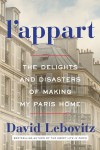19
Followers
19
Following
M Sarki
Besides being a poet with four collections published, M Sarki is a painter, film maker, and photographer. He likes fine coffee and long walks.
M Sarki has written, directed, and produced six short films titled Gnoman's Bois de Rose, Biscuits and Striola , The Tools of Migrant Hunters, My Father's Kitchen, GL, and Cropped Out 2010. More details to follow. Also the author of the feature film screenplay, Alphonso Bow.
Currently reading
L'Appart: The Delights and Disasters of Making My Paris Home
We Learn Nothing: Essays
Elmet: LONGLISTED FOR THE MAN BOOKER PRIZE 2017
Limbo, and Other Places I Have Lived: Short Stories
The Double Life of Liliane
At Home with the Armadillo
American Witness: The Art and Life of Robert Frank
Autumn
Inside Out: A Personal History of Pink Floyd (Reading Edition)
American Witness: The Art and Life of Robert Frank
Poetry for Kids: Emily Dickinson
 https://msarki.tumblr.com/post/151185260698/poetry-for-kids-emily-dickinson-by-susan-snively
https://msarki.tumblr.com/post/151185260698/poetry-for-kids-emily-dickinson-by-susan-snivelyWonderful to imagine a young child being introduced to poetry by Emily Dickinson herself, or someone almost like her. Emily’s words (or most of them) do sound right but in this illustrated collection that historic em dash is missing for those of us who seriously read her. Point is, what matters as importantly to a poet is the way her poem looks. The form it takes, its architecture. In Poetry for Kids: Emily Dickinson edited by Susan Snively it appears the story and illustrations by Christine Davenier takes precedence over remaining true to the work of Emily Dickinson. Though this children’s book is a suitable introduction to one of America’s greatest poets, a disservice is done to the children by the inferior editing. How pretentious to believe a Dickinson poem better, and more accessible, if changed or lightened in its weight in order to be explained inappropriately. It is absurd to think Susan Snively would know best or have better words than the ones Emily had chosen as her own. What alerted me first to this offense was when I read Because I could not stop for death (a favorite poem 712 collected in [b:The Complete Poems of Emily Dickinson|1183392|The Complete Poems of Emily Dickinson|Emily Dickinson|https://d2arxad8u2l0g7.cloudfront.net/books/1341783054s/1183392.jpg|1443553]) and I immediately felt something wrong. Her exacting words had been changed. And some were even missing. The poem’s meaning obviously altered to reflect what the editor wanted, disregarding the punctuation and form Dickinson had established as her own.
Too often in our public schools creative writing is distilled to a simple formula with hard rules. To a genius the likes of Emily Dickinson none of that instruction would apply, and so, in this book, the young student is robbed of a first exposure to a greater art. The child’s basic education is instead woefully patterned for the young student to simply fit in and be assigned a membership in the herd mentality, adding another number to further our world’s commerce and enterprise.
Rather than maintaining this status quo why not subject even the youngest of readers to the un-edited work of Emily Dickinson? To present her poems as written and collected in her many handmade fascicles neatly tied and bundled underneath her bed? A novel idea that offers far greater opportunities to explore and discuss what art truly is, and in this case, poetry. Teaching also becomes more demanding and expects the instructor to learn herself the truth about her subject. But all is not lost in this attractive children’s book. The more inquisitive ones among these exposed children to a censored, somewhat bowdlerized, Emily will further discover in their own future independent study that what this poet actually presented on each authentic page was truly remarkable. And the shame of it all can then be once again proffered and exposed.







